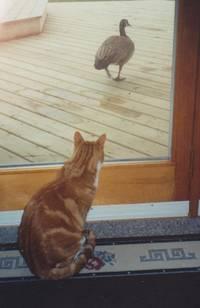
Unfortunately it is all too common for indoor cats to live a far more sedentary lifestyle than they should. A sedentary lifestyle contributes to high obesity rates, diabetes and other preventable diseases. Increasing activity in indoor cats also provides environmental enrichment and can help prevent unwanted behavioural issues such as inappropriate urination. On top of the health benefits of increasing activity, the time you spend playing with your cat is a great way to nurture your relationship. Here at Mitchell Veterinary Services we recommend some tips on how to get your indoor cat moving:
- Provide a cat tree with perch. Cats enjoy climbing and jumping; cat trees not only help to increase activity but also provide a safe area for cats to climb, which also helps for mental well-being.
- Use food to bring out your cat’s inner hunter. Hide your cat’s kibble in different locations around the house so that he has to hunt for it. This provides for both mental and physical stimulation. You can also toss kibble for your cat to chase (they love this game!) and use treat dispensing toys for your cat to play with.
- Use toys that mimic prey your cat would like to catch.
- Use a wand with fur or a feather at the end (you can also use a string with a toy tied to it). Swing it in the air to mimic birds and move it around on the ground to mimic mice. Remember to let your cat capture the prey as well.
- Toss around larger soft toys that your cat can bite and scratch.
- Hide a toy under a blanket and make it move to entice your cat to pounce and dig. You can also hide toys in boxes or other locations that allow their hunting instincts to kick in.
- Put away your cat’s favourite toys. This helps to prevent boredom. Leave some toys out, but save the special ones for play time. This will allow the toys to stay exciting for longer.
- Older cats need play time too. You may need to modify the play based on their abilities but make sure to include daily play with them as well. This will help keep them young and spry.
Tips to Ensure Safe Play:
- Do not reward bad behavior with play. Only elicit play when your cat is calm, quiet and behaving appropriately.
- Do not use your hands, fingers, or other body parts as toys, or your cat will learn to bite and scratch them. Stop play that gets too rough and resume when your cat is calm.
- Ask family members to participate in the fun and share the responsibility of cat ownership; always make sure there is close supervision of play between cats and children.
Make sure to set aside a specific time each day and make play time a part of your daily schedule. Your cat will be less anxious the rest of the day in anticipation of your special play time. Cats, just like dogs, enjoy spending quality time with their humans. Play is a very important part of keeping your cat healthy and happy.
